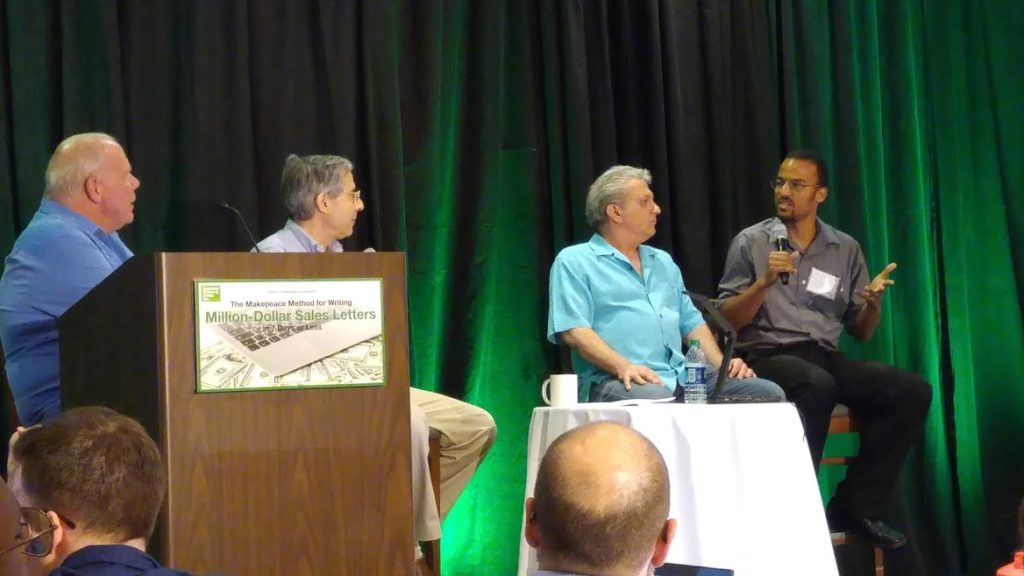Over the past 12 months, I’ve written copy that’s generated over $6 million in sales (that I know of) for my clients. The weapon of choice has been email marketing.
That number is not meant to impress you, but to reassure you that what I’m about to share with you has been proven to work in the real world
I’m not sharing what I’ve heard about, but what I’ve experienced firsthand.
This could probably be a book, but I’ll keep it brief.
Here are a few of the most important lessons I learned, relearned or doubled down on this year:
1) Don’t assume you know your audience
Ask questions, do surveys, but most importantly, pay attention to the actions they take when interacting with your content.
- What kind of subject lines do they open?
- Where do they click?
- What length seems to work best?
- What kind of offers do they respond to?
- What totally bombs?
2) Test a lot of (wildly different) things
This ties to the previous idea. You can’t measure the relative effectiveness of one proposition against another unless they’re different enough to be unmistakable from each other. That’s especially true when you don’t have tens of thousands of people seeing and reacting to the message.
The best way to have a good idea is to have lots of ideas. You can still test a red button vs. a blue one, but that’s not where breakthroughs are going to happen.
One example from early this year was a ~300 word email pointing to a long sales page vs. a 1500 word email going to an order form. In this particular instance, the long email outperformed the short one by 5X. This one baffled the heck out of me!
On the other hand, some of the highest converting landing pages I’ve seen only have one sentence on them. Different ideas work on different offerings, even with the same audience. That’s why you have to keep testing!

3) Quality is better than quantity
Not every company agrees. Even some of the clients I’ve worked with don’t agree. You can treat list building as a pure “numbers game” and bring in the maximum number of people with vague or misleading squeeze pages and hope some of them will eventually become good customers or clients. I believe and have generally found that being “for” a specific audience, with specific promises and a distinct voice will bring in far smaller numbers of far superior readers/prospects.
4) The most important thing is the offer, or more specifically, your Audience-Offer Alignment
Strong copy can only do so much for you. Selling something people want is much more important — and easier than convince them to buy something that doesn’t obviously fit into their plans/priorities.
5) Your reader responds how you train him to respond — starting with how you acquired him
If you bring in subscribers with a fear-based offer or lead magnet, that sets the stage for what they’ll expect in the future. It may be difficult to pivot later. If you offer discounts at the end of every month, they won’t respond to offers early in the month. If you always extend your deadline, they won’t take them (or you) seriously.
Brian Kurtz wrote a great article exploring this point, with a Gary Bencivenga/Boardroom case study.
Clarity and consistency are necessary for building trust and setting appropriate expectations. Variety is critical for maintaining interest and curiosity.
6) People are getting smarter, so response is harder than ever to get
Many marketers are resorting to gimmicks to overcome our instant delete reflexes: bait and switch subject lines and body copy. Using “re:” and one-word subject lines to catch you off guard and get the click.
Those tactics do work — but they’re getting less effective every day because you can only fool someone so many times. Use such techniques sparingly. Rather, strive to be truly valuable, interesting and trustworthy to your readers.
In other words, don’t try to be slick. It’s a bad long-term plan — and it’s not great in the near-term, either.
7) Stories sell
You’ve heard it a thousand times, and it’s no less true now than it was the first time. Personal stories, historical anecdotes, even fun little facts get people reading, keep them interested and neutralize their resistance, at least temporarily.
I’ve seen the addition of a narrative element double clickthrough rates and triple conversion rates vs. straight product description or marketing talk.
8) Sequences, not single shots
Give yourself more shots by communicating in sequences rather than single blasts. And if you connect one email to the next, you can increase readership and compound the persuasive power of the campaign as a whole.
Just remember to test this. One of the most recent tests I did pitted a single email vs. two email, one-day offer — and the single email outpeformed by about 20%.
9) Urgency works like nothing else
Most people procrastinate as if their sanity depends on it. Deadlines move people to action. Open invitations are often ignored.
10) Customer Lifetime Value is the ultimate metric — not open rates or CTR
As Clayton Makepeace told me, if you’re making money on the front end, you’re doing it wrong!

This isn’t necessarily a set-in-cement rule. The point is to abstain from worrying so much about what it costs to acquire customers. Focus on getting as many of the right people on your files as possible. With the right back end, the cost per acquisition is a relatively small matter.
Many entrepreneurs and marketers are too focused on the front end costs. Clayton’s advice is an attempt to rearrange that thinking.



